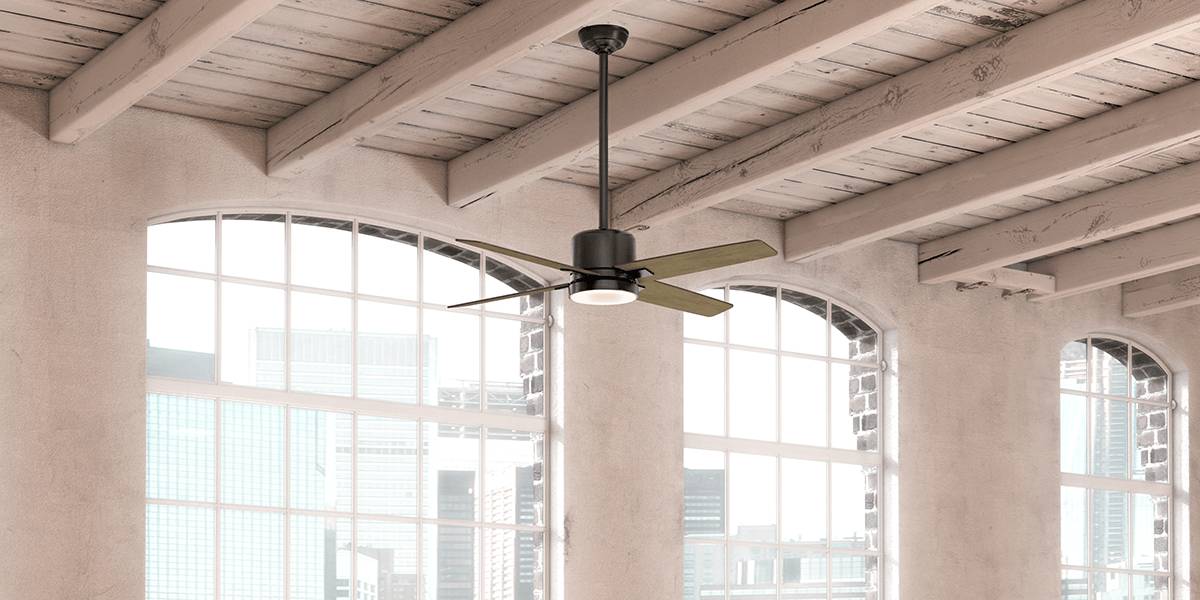
How a Ceiling Fan Will Help You Reduce Your Cooling and Heating Costs
Learn About Summer Savings
During the warm summer months, turning your ceiling fan on and off in coordination with your air conditioner helps to better circulate the cool air generated by the air conditioner. The result is that your home will feel cooler than if you were running only the air conditioner. This allows you to set your AC thermostat to several degrees higher than you normally would, while maintaining a comfortable climate in your home.
Efficient Energy Use
Ceiling Fans Help You Stay Cool
According to the U.S. department of Energy, "If you use air conditioning to cool your home, a ceiling fan will allow you to raise the thermostat setting about 4°F (2.2°C) with no reduction in comfort."
For every degree that you raise your thermostat, you will reduce by about 10% the number of "on" cycles your AC will need to run to achieve your desired temperature — thereby reducing your energy consumption.
The more you turn your ceiling fan ON and your AC OFF, the more you save. That's because ceiling fans are far more energy efficient than air conditioners.
Simply put, ceiling fans use a fraction of the energy required by AC units.
Power-Saving Tip
Running a Ceiling Fan Reduces Cooling Costs
ENERGY STAR reports that homeowners who turn up their thermostat by a couple of degrees and run their ceiling fans to stay comfortable can cut their air conditioning costs by over 14%.
Source: https://www.energystar.gov
Wind-chill effect
Ceiling fans help keep you cool through what is known as the the "wind-chill effect." This is when the moisture on your skin, produced through your sweat glands, evaporates in the breeze caused by your fan. This process lowers the temperature on the skin's surface, making you feel up to eight degrees cooler.
Summer fan direction
Make sure your ceiling fans are turning counter-clockwise in the summer, pushing the air downwards, to create the desired wind-chill effect.
Learn About Winter Savings, Too
Can a ceiling fan really help reduce heating costs? The answer is a resounding "yes."
During winter, turning your ceiling fan on and off in coordination with your furnace helps to better circulate the warm air generated by the furnace. The result is that your home will feel warmer than if you were running only the furnace. This allows you to set your furnace thermostat to several degrees lower than you normally would, while maintaining a comfortable temperature in your home.
The more you turn your ceiling fan on and your furnace off, the more you save. That's because ceiling fans are far more energy efficient than home heating systems.
It costs just $2.31 to run the average ceiling fan for a full month (31 days). In comparison, the average pro-rated monthly gas heating bill for a Canadian home is a whopping $125 - $150.
Simply put, ceiling fans use a fraction of the energy required by home furnaces or home electrical heating systems.
Winter fan direction
Make sure your ceiling fans are turning clockwise in the winter, pushing the air upwards, to create the desired air flow.
Bottom line
Although running a ceiling fan also uses energy, ceiling fans are much less energy intensive than either air conditioners or furnaces, so your overall energy usage is reduced.
Learn more about how ceiling fans can save you money during winter.
